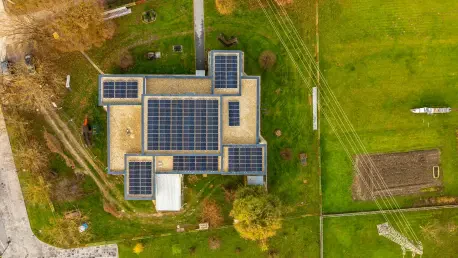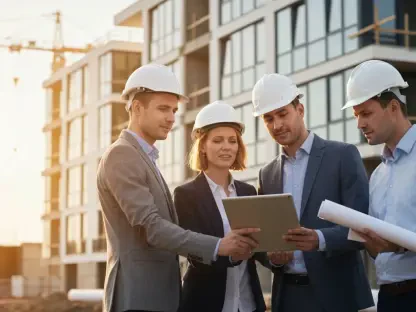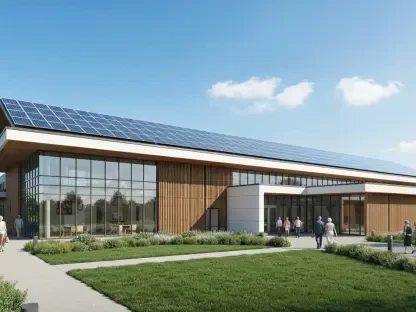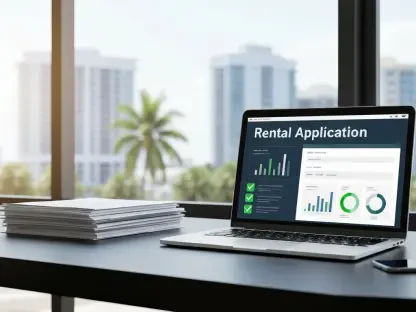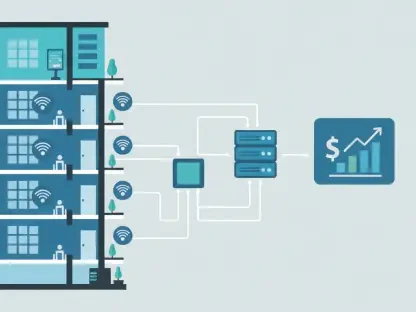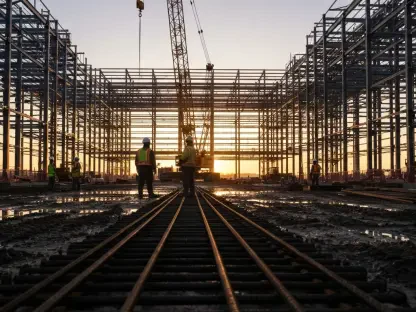In recent years, there has been a growing emphasis on green building standards as an essential strategy to enhance sustainability within the real estate sector. As environmental challenges evolve, so must the criteria and frameworks that guide the development of eco-friendly buildings. The shifting focus towards tackling energy efficiency, emissions, and integrating emerging technologies challenges traditional approaches and compels the real estate sector to adapt for the future. Certification systems that provide comprehensive validation of a building’s ecological footprint have become vital tools in achieving global sustainability goals.
Advances in Green Building Certification
The JLL and ILFI Collaboration
One of the most innovative initiatives in green certification is the collaboration between JLL and the International Living Future Institute. This partnership aims to create a new certification focusing on reducing carbon emissions from existing buildings without significant capital investment. Historically, ILFI’s Zero Carbon Certification concentrated on both embodied and operational carbon, which required substantial structural modifications. By adapting this framework to focus on existing buildings, this initiative represents a significant shift, promising a more scalable approach to accelerate decarbonization.
The collaboration reflects a broader trend in the industry, where addressing emissions must extend beyond new constructions to include older structures. The intent is to create pragmatic, effective solutions that can be applied broadly across existing buildings. This shift underscores a broader understanding of decarbonization in the sector, indicating that meeting net-zero goals necessitates tackling operational and embodied carbon issues concurrently. By prioritizing intervention in existing infrastructures, JLL and ILFI are setting a precedent for others, demonstrating that sustainable real estate practices need to accommodate various challenges and contexts.
Enhancements by USGBC and BRE
The U.S. Green Building Council and the UK’s Building Research Establishment are leading players in revising their frameworks for sustainable building certifications. LEEDv5, a proposed enhancement by USGBC, aims to inclusively cover aspects such as decarbonization, equity, health, and resilience. These enhancements incorporate broader sustainability aspects, recognizing buildings’ social and environmental roles. Similarly, BRE’s BREEAM V7 scheme is being developed with an emphasis on whole-life carbon assessment and net-zero alignment, accommodating applications beyond the environmental footprint to include elements like design, construction, and use phases.
These changes underscore an essential progression in the realm of certification schemes, aligning them with contemporary environmental challenges and objectives. Such frameworks are increasingly looking to track a building’s total environmental impact throughout its lifecycle, rather than only during the construction phase. By encompassing all stages, the certifications provide a more comprehensive overview of environmental responsibility, and their adaptation is crucial in ensuring that all facets of a building’s operation and material use are accounted for efficiently and sustainably.
Industry’s Role in Tackling Embodied Carbon
NABERS’ Progression in Measuring Embodied Carbon
In Australia, the National Australian Built Environment Rating System has made substantial strides concerning operational carbon and is now developing an Embodied Carbon rating tool. Accurately measuring and verifying emissions related to building materials is a critical component of this tool. Historically, emphasis was placed on reducing operational carbon, often leaving the impact of materials overlooked. NABERS seeks to fill this gap, recognizing that embedded emissions constitute significant portions of a building’s pollution profile, contributing factors that previously did not receive attention.
Developing such a tool addresses vital emissions that contribute significantly to a building’s carbon footprint. By providing measurable metrics and methodologies aimed at assessing embodied carbon, NABERS facilitates a more holistic understanding of emissions. This capability enables property developers, owners, and tenants to make more informed decisions, promoting a comprehensive approach to reducing the environmental impacts of construction and building use. This development by NABERS reflects a commitment to investing in tools and innovations that can elevate the structure of sustainability across the industry, acknowledging and confronting end-to-end sustainability challenges.
Promoting Sustainable Financing Mechanisms
Another noteworthy development in sustainable real estate is the increasing drive toward embedding sustainable financing mechanisms. Organizations such as BRE, USGBC, and the Green Building Council of Australia have united efforts to support frameworks that facilitate Environmental, Social, and Governance reporting and align with global green taxonomies. The integration of sustainable finance into certification frameworks is not merely about assessing premises but involves a deeper partnership with financial institutions. Offering support for environmentally responsible development becomes a win-win, as stakeholders mutually benefit from the alignment of economic incentives with environmental outcomes.
Investment bodies, like the Global Real Estate Sustainability Benchmark and the Climate Bonds Initiative, are crucial partners, collaborating to ensure that these mechanisms reflect contemporary market needs. By providing accreditation and incentives, finance becomes a driving force pushing toward sustainable goals. These partnerships help investors identify assets that align with sustainability criteria, unlocking capital flows into greener practices. Integrating finance into certification schemes allows for a comprehensive transition to building more resource-efficient infrastructures, enhancing the role of sustainable finance in the long-term viability of global real estate endeavors.
Beyond Traditional Certification Models
Adaptive Certification Frameworks
The role of adaptive certification frameworks in sustainable real estate extends beyond traditional models of assessment. These frameworks are critical in ensuring that evolving environmental and corporate landscapes are effectively navigated. The complex nature of emissions, energy use, and building materials requires dynamic and resilient certification systems keen on encompassing new knowledge and technologies. Certification bodies must respond and adapt to pressing sustainability issues to remain relevant and credible.
In an era marked by rapid technological advancement, certification systems must offer more than basic compliance. They should provide strategic insights and facilitate meaningful impacts on sustainability outcomes. They serve as guides for industry professionals, steering development trajectories toward more sustainable practices. With technology constantly progressing, adaptive certifications can help assess a building’s entire footprint, improving its infrastructure and reducing consumption across its life cycle. They are pivotal in setting the industry’s standards, bridging the gap between technological innovation and environmental responsibility.
Future Directions in Sustainable Real Estate
As the environmental landscape undergoes continuous transformation, the future direction in sustainable real estate seems poised for further innovative developments. There is a growing recognition that adaptability in certifying processes should parallel real-time environmental shifts and societal obligations. The movement toward these advancements signifies a collective understanding that a concerted, global effort is required for impactful ecological change. Continuing the current trajectory promises significant shifts in how the built environment optimizes resources and energy.
With climate concerns at the forefront, there is a higher demand for building standards that not only address immediate needs but also foster sustained ecological resilience. Enhanced regulatory frameworks are anticipated, bridging the gap between ecological aspirations and practical implementation. As these certifications evolve, they are expected to provide critical support to stakeholders in the real estate industry, ensuring that economic and environmental priorities are aligned robustly for the decades ahead. Achieving true sustainability remains a complex endeavor, yet the ongoing adaptations offer promising insights into more effective, comprehensive green building practices.
Stepping into a Sustainable Future
In recent times, the spotlight on green building standards has intensified as an essential method to boost sustainability within the real estate industry. Environmental challenges continue to evolve, necessitating updated criteria and frameworks that steer the creation of eco-friendly structures. This shift in focus towards addressing energy efficiency, reducing emissions, and integrating new technologies is challenging conventional methods and demands that the real estate sector adapt to future needs. Certification systems have become crucial, offering credible validation of a building’s ecological impact, thereby playing a critical role in achieving international sustainability objectives. As these certification processes rigorously assess a building’s energy use, water efficiency, materials, and indoor environmental quality, they help ensure that structures meet high environmental performance standards. This not only benefits the planet but also adds value to properties, encourages innovation in building practices, and meets the increasing demand from eco-conscious consumers.
